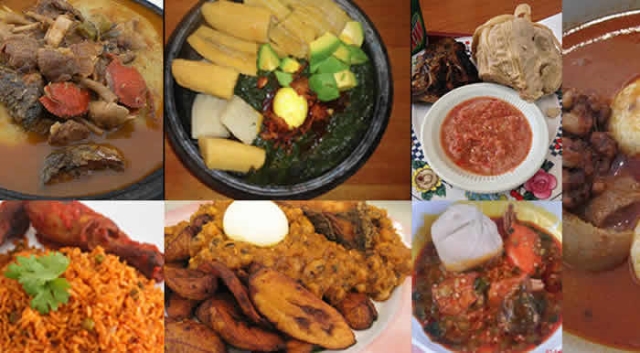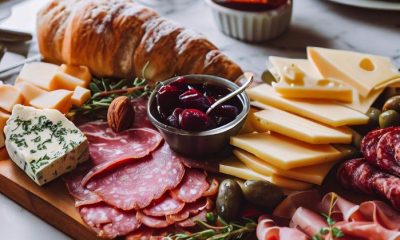Opinion
Healthy Quarantine: Food and Nutrition Strategies
As countries worldwide deploy stringent measures to curtail the spread of the novel coronavirus – Covid-19, measures such as self-quarantine and social distancing may distort the normal food and physical activities of most people. While observing all the measures put forward by governments, it is important not to lose sight of the other activities we equally need to adjust to so that we come out of the Covid-19 blues healthier than ever.As shelter in place, has become necessary in the fight against the global pandemic, our thoughts should be directed to good nutrition and physical activities to warrant good immune health. Though the Covid-19 has brought in its wake fear and panic, there is still a lot more this pandemic is offering in terms of quality of life.
READ ALSO:(VIDEO): I have coronavirus and need the help of Ghanaian churches – Evangelist Addai cries out
Even though food options are many, having the children home for close to four weeks has suddenly depleted our food options. Interestingly, and quite unexpectedly, the signals underlying the hunger, satiety and metabolism of our dear children have become very active.
The children have developed binge appetite for food with a lot of food requests and hunger pranks further testing our food skills and innovations. The question, therefore, becomes “what food related measures can we adopt to stay healthy until this crisis fades away without suffering serious health consequences?
The health and wellbeing of the family hinge on our ability to adapt and leverage some of these strategies elaborated below (in addition to other working strategies) during this quarantine period.
Nutritional balance: a healthy diet is one that is considered adequate and provides appropriate amounts of each essential nutrients in addition to calories and fibre. We need not consume more of one nutrient at the expense of the others.
This may sound very technical and difficult but once you get to know which ingredients to choose and blend in your meals, the anxiety and difficulty evens out. In these trying times, we need to prioritise ingredients when preparing meals. Our best bets should be on ingredients that give the immune system a good boost.
A quick way of reminding yourself of a good mix of nutrients is by making reference to the “rainbow” colours. This simply means including a variety of fruits, vegetables and whole grains in your diets which guarantee the intake of key vitamins and nutrients. Colours orange and red such as tomatoes, carrots, watermelon; green and purple such as kontomire, okro, pear, eggplant; brown and tan such as ginger, wheat, brown rice; yellow and white such as butter, margarine, mushrooms, onions, garlic, cauliflower.
An added advantage would be to go low on salt, sugar and fat intake not only for you the adults but the children as well.
Portion control: most homes need to aim for and practice portion control. As we pay attention to the quality of foods we prepare, we equally need to accord same to the serving sizes.
We need to eat in moderation that is not too little and not too much. With the current situation, it is very easy to fall for the temptation of overeating. We need to control these cravings and guide our children to control theirs as well.
In addition, use smaller bowls and plates to control food portion sizes. When using bigger plates and bowls, there is always a tendency to fill them up. Serve a small portion of rice and chicken stew in the middle of a big plate, and your mind will quickly prompt you to add more to fill the plate. On the other hand, if you serve that same portion in the former instance on a smaller plate, psychologically you will think it will be satisfying, and indeed, in most cases you will be satisfied.
Rotational menus: lack of options should not compromise our opportunities to prepare and consume varied diet. This means spending a little time to create a menu to guide your choices. This should be rotational so that food options can be repeated over and over again.
You can create a food bank with input from the beneficiaries and draw ideas from the bank on weekly basis. Once in a while, you can go outside your menu to prepare a non-menu item or order something from a restaurant (where delivery services exist) to satisfy your cravings without guilt. However, try to stick to the menu plan because cravings are usually unhealthy.
Cheaper but healthy food options: aim for foods that yield more and complement most carbohydrates. For instance, groundnut and palm fruit soups go well with banku, boiled rice, boiled yam, eba, etc.
Introduce different types of porridges (i.e. hausa koko, corn dough porridge with soya bean powder, tom brown, rice porridge) to your breakfast menu and press the brakes on the expensive beverages.
Supplement breads with simple pancake recipes (all-purpose flour, sugar, eggs, milk, baking powder, salt and vegetable oil).
Reach for your cookbooks, recipe books, download recipes from online, download Super Cook app (an app that enables you to cook with the ingredients you already have at home), or call your friends and family for food ideas. Try new foods, you may be surprised what will excite your palate.
Quickies from left over foods: with left over foods and few ingredients one can still enjoy a healthy meal. You can either reheat and use on another day as a quick lunch or dinner, or use it as part of other ingredients to prepare another dish.
If you have larger amounts of leftovers and have no plans of consuming them the next day, then remember to transfer them into freezer-safe containers for freezing. You can store them in plastic containers, zippy bags, portion rubbers. It is also a great idea to save your ice cream containers, margarine containers and reuse them for storing your left over foods.
Energy expenditure: be aware that if your energy consumption from foods is not at par with your energy expenditures, it could lead to steady weight gain. With the current situation, it is advisable to adopt a physical exercise or activity to help maintain a healthy weight.
Avoid spending most of your time on your couch watching television or in your study working. Get up and give the body a push. You can download dance apps from App store or play store, subscribe and follow workout videos on YouTube, or simply skip or play hopscotch with your family. Just stay active.
Healthy Snack ideas: filter through the list of snacks below to find the best ones for you and the children. Banana, Roasted groundnuts, Sliced apples, Orange, Sliced Watermelon, Sliced pineapple, Flavoured rice pudding (with honey), Plantain chips, Roasted plantain, Egg and pepper, and Kelewele and roasted groundnut.
Eat right, stay active and rest well during this quarantine period. For those with special food needs or on diet just accept that your quarantine diet will not be as predictable and perfect now and make the necessary adjustments. Take the necessary steps possible to ensure that, when this pandemic blows over, you will be healthy enough to resume your regular routine.
















